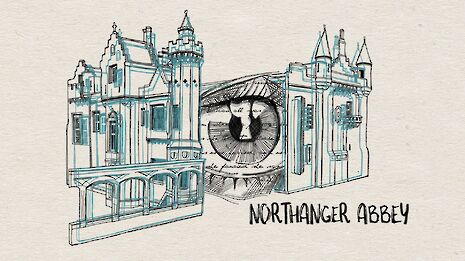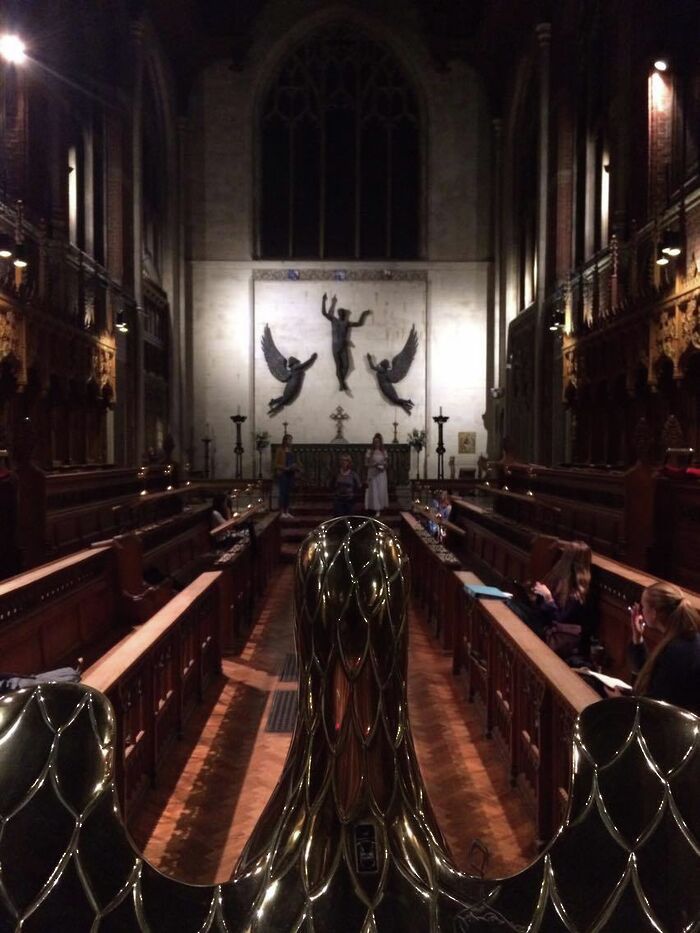Northanger Abbey review
You will probably never see the likes of this again: it is impossible not to be charmed, gripped and thrilled

To anyone who has ever read Austen, the prospect of putting on a play with her words might be a puzzling one. Her writing relies so much on long and winding clauses, on sentences which change perspective halfway through, and on description which would surely be lost in the transition from page to stage. At the end of Madeleine Trepanier’s production of ‘Northanger Abbey’ last night, I was no longer puzzled.
Trepanier’s script is wonderful in its preservation of the complexity that is so fundamental to Austen’s writing, as the twisting and turning sentences unfold into a kind of adventure in the scenes in front of us. Lines are shared between characters as perspectives shift and fragment, and the characters often find themselves narrating their own actions in the third person: the sense of dramatic self-consciousness that this creates is enthralling.
Kay Benson as Catherine delivers her lines with such clarity, relishing every word of the text and reminding the audience that this play is, in the end, about Austen’s language. The story is there, and it is tense and charming, but it is the language to which we should be paying attention. Benson’s performance is generally brilliant; she perfectly captures the figure of a woman coming out into the social world for the first time in her sultry looks down the chapel aisle, but also the innocence and curiosity of one so unprepared for reality. She is earnest; her emotions swing wildly through every changing situation. She plays a Catherine so beautifully caught up in the novels that she reads, novels which are heaped upon her by the characters in the opening scene of the play as they pile books into her hand and thus metaphorically seem to construct her understanding of the world.
Kay Benson as Catherine delivers her lines with such clarity, relishing every word of the text and reminding the audience that this play is, in the end, about Austen’s language
Of course what I have failed to mention so far is the setting of this play. Selwyn Chapel provides a startingly new and yet intensely perfect backdrop – although it is used much more cleverly than just as a backdrop. The spotlight which lights up the majestic stained-glass window in the second act is a nice touch, and a particular highlight is the moment when Catherine stands in the raised seats behind the choir, framed by the Gothic carvings and drowned in red light. The cast use the space interestingly and excitingly, the pew becoming the stalls of a theatre, the aisle a ballroom and then the halls of Northanger Abbey itself. The Gothic imagination is preserved and emphasised.
The props which construct and deconstruct this space are deployed with smoothness, from frames to sheets to candles – my favourite was the construction of the carriage out of chairs turned to face different directions as the characters looked out of the front or the back windows. These props create a strong sense of Austen’s place, yet never let the play break out of the space of the chapel.
The costumes evoke typical Victorian clothing: the way in which they manage skilfully to tread the line between indulging these 19th century fashions and yet not being overly complicated or exquisite is certainly to be praised. The coordinated ribbons and sashes for each of the three female protagonists, a different colour for each, gives each of them an almost symbolic presence in these scenes which show so many different young women coming out into society.
This is something completely new, something which you won’t have seen at Cambridge and probably never will again. The script has obviously been scrupulously thought-through, the acting clear and beautifully light, and the music and costumes complement the awe-inspiring setting of Selwyn Chapel. The cast fill Austen with a newfound energy that will excite anyone who has read her (and intrigue anyone who hasn’t). It is impossible to sit there, in the pews of this Gothic chapel, and not feel the pull of the Gothic imagination that runs through Catherine, or the longing for the ballroom and the social world of these women as they talk about books and men and life. It is impossible not to be charmed, gripped and thrilled.
 News / Eight Cambridge researchers awarded €17m in ERC research grants27 December 2025
News / Eight Cambridge researchers awarded €17m in ERC research grants27 December 2025 News / Downing investigates ‘mysterious’ underground burial vault 29 December 2025
News / Downing investigates ‘mysterious’ underground burial vault 29 December 2025 Lifestyle / Ask Auntie Alice29 December 2025
Lifestyle / Ask Auntie Alice29 December 2025 Sport / Hard work, heartbreak and hope: international gymnast Maddie Marshall’s journey 29 December 2025
Sport / Hard work, heartbreak and hope: international gymnast Maddie Marshall’s journey 29 December 2025 Interviews / Meet Juan Michel, Cambridge’s multilingual musician29 December 2025
Interviews / Meet Juan Michel, Cambridge’s multilingual musician29 December 2025










